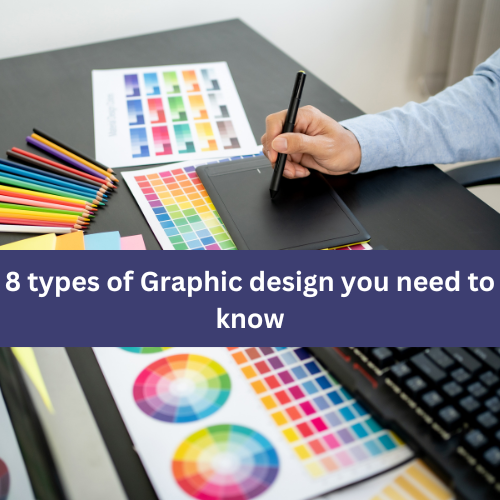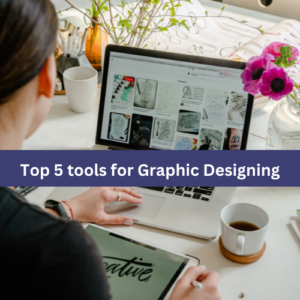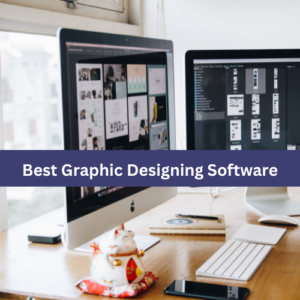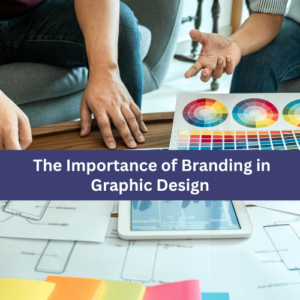
In the modern era of technology, graphics hold significant importance in effectively conveying messages. A well-crafted and impactful design has the potential to give even small businesses a competitive advantage over larger brands. Graphic design serves the purpose of not only making things visually appealing but also presenting information in a compelling manner to effectively communicate with the intended audience. When the right image is combined with a well-written headline and executed professionally within a cohesive package, the message delivers a powerful impact and hits the target. Graphic design can be categorized into 8 main types, and it is essential for both aspiring designers and design service providers to have a clear understanding of these categories.
- Visual Identity- Visual identity design is a prevalent form of graphic design that enables businesses to establish a distinctive brand identity, effectively conveying the brand’s narrative and leaving a memorable impression on the audience. It encompasses various components that work together to create a unique image for the brand. Key elements of a strong visual identity include logos, color palettes, image styles, typography, and photography. This particular type of graphic design focuses on visually representing the brand’s qualities through the strategic use of images, shapes, and colors. For a Visual ID Graphic Designer to effectively convey the brand story, it is essential to have a comprehensive understanding of various graphic design types. Along with this knowledge, they should possess excellent communication, conceptual, and creative skills. Additionally, a passion for researching industries, organizations, trends, and competitors is crucial for creating impactful visual identities.
- Marketing and Advertising- When people think of graphic design, marketing, and advertising designs are often the first things that come to mind. This type of graphic design encompasses both digital marketing and print media advertisements, aiming to attract customers. Marketing graphic design involves creating visual elements to promote a product or convey a specific message. The primary objective is to enhance the perception and visibility of a brand, thereby facilitating its growth and eventual success. A marketing designer is a specialized graphic design professional who utilizes their artistic skills to create marketing and advertising campaigns for clients.
- User Interface(UI)- User Interface (UI) refers to the visual and interactive components of an application, website, or device through which users engage. UI design focuses on creating interfaces that are user-friendly and provide a seamless experience for users. In the context of graphic design, user interface (UI) design encompasses various elements such as display screens, keyboards, mouse, and the overall desktop appearance. However, UI design specifically emphasizes the visual experience of users and involves creating on-screen graphical components like buttons, menus, micro-interactions, and more. A UI designer’s role is to strike a balance between technological functionality, ease of use, and visual appeal to create a seamless and visually engaging user experience.
- Publication- Publication graphic design is a specialized field within graphic design that centers around creating layouts and visuals for printed materials, including magazines, newspapers, books, and various types of publications. This field can be categorized into two main types: print and digital design.
- Print- Print publication design is the predominant type within the field of publication design. It encompasses various materials such as books, magazines, mailing materials, newspapers, and more. When designing for print publications, factors such as color, typography, white space utilization, photographs, layout positioning, and navigation must all be carefully considered.
- Digital- In the contemporary era, various printing materials, including books, magazines, and newspapers, are also accessible to consumers in digital or online formats. While aspects like color, images, white space, and typography remain important in digital publication design, there are additional considerations for designers in this realm. They must take into account factors such as functionality, interactive elements, and animations, and ensure compatibility across mobile devices and computer browsers.
- Packaging- Packaging design is often overlooked when thinking about different types of graphic design. However, packaging serves a purpose that goes beyond mere functionality. It involves much more than just providing a container for a product. The primary objective of package design is to highlight the value of a product to the consumer, ultimately motivating them to make a purchase. Package design necessitates a diverse range of design skills and techniques, much like other types of design. Packaging designers are responsible for generating concepts, producing mockups, and preparing print-ready files for a product. This requires extensive knowledge of print processes as well as a deep understanding of industrial design and manufacturing principles.
- Motion Graphic- Motion design, as the name suggests, involves creating graphics that are in motion. With the rise of technology and the increasing popularity of video content, this type of graphic design has garnered significant attention. Motion design can be applied across various digital platforms and is considered one of the latest forms of graphic design.
- Art & Illustration- While Graphic Design and Illustration are distinct creative fields, there is often an overlap between the two. Graphic design is commonly associated with commercial art, whereas illustrations are considered fine art. However, graphic designers frequently incorporate illustrations to make their designs more distinctive and impactful. As a result, Graphic illustrations can be defined as a fusion of visual elements such as colors, lines, shapes, forms, and text layouts from fine arts combined with graphic design principles. Designers have the ability to utilize illustrations to enrich logos, create mood boards, produce marketing materials, and enhance user experience. Illustrations play a significant role in effectively communicating ideas in an engaging and visually appealing manner, which is crucial when aiming to reach a broad audience.
- Environmental Graphic- Environmental Graphic Design (EGD) is a field that focuses on enhancing the visual appeal of architectural and landscape elements. It involves integrating various components such as materials, images, colors, patterns, illustrations, and typography with architectural features to convey a specific message or create a particular experience. The purpose of EGD can vary, ranging from educating users on how to engage with the environment to inspiring them by showcasing the people and activities associated with the space. Environmental Graphic Design (EGD) is a multidisciplinary field that combines various disciplines including architectural, interior, landscape, graphic, and industrial design. EGD designers collaborate with professionals from these fields to conceptualize and execute their designs. Therefore, designers in this domain should possess experience in both graphic design and architecture. They should also be knowledgeable about industrial design principles and proficient in reading and sketching architectural plans.




